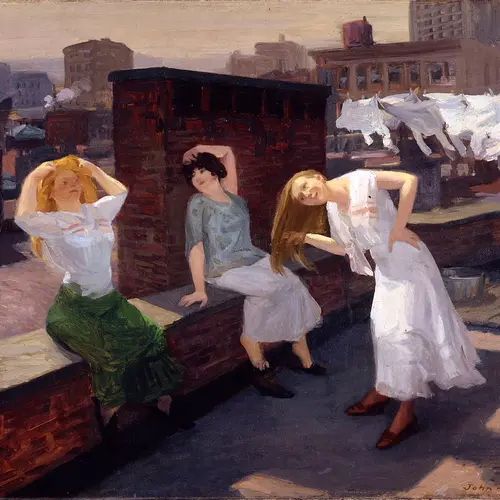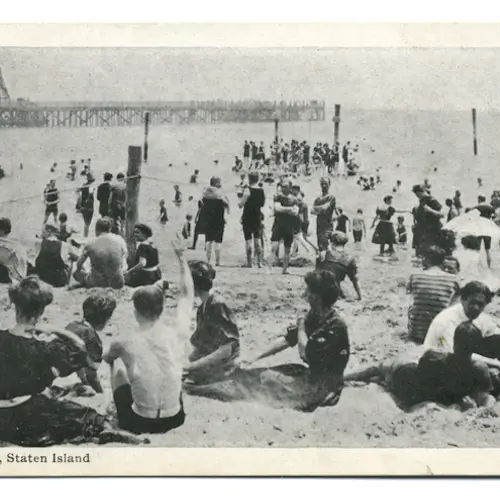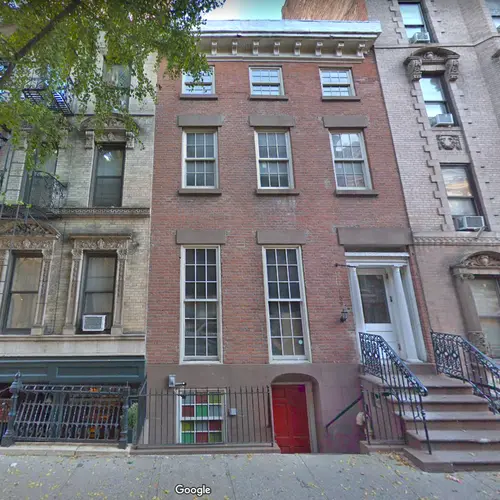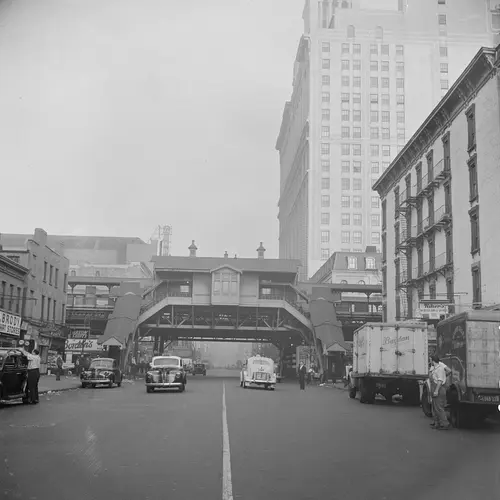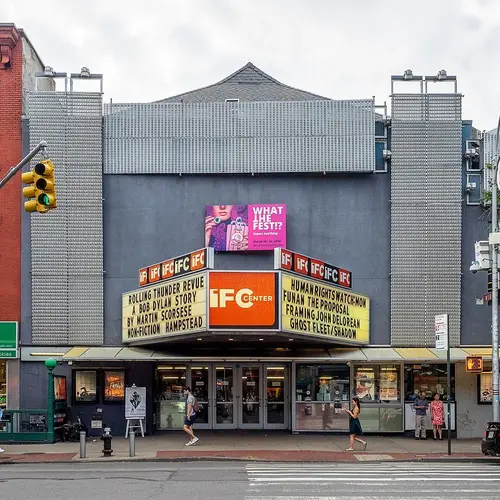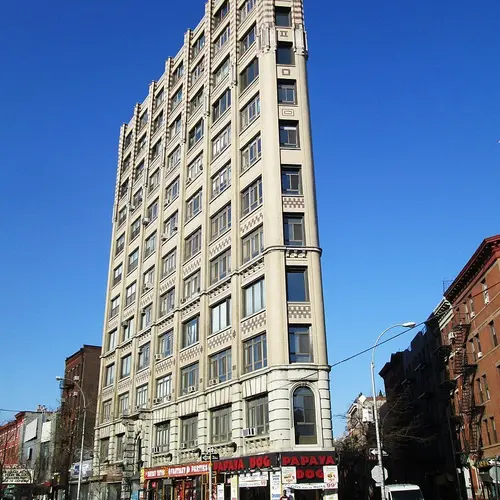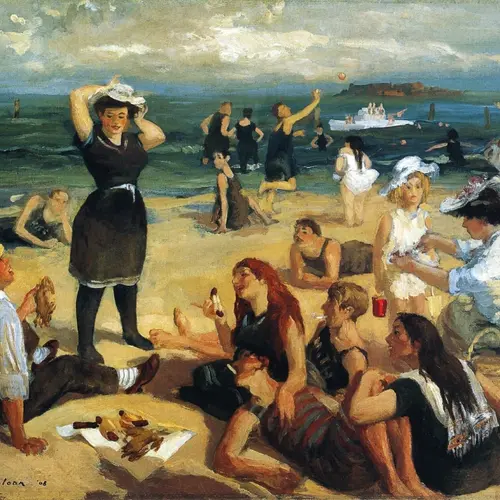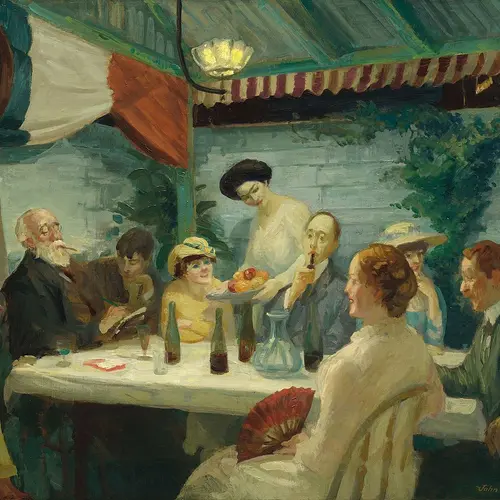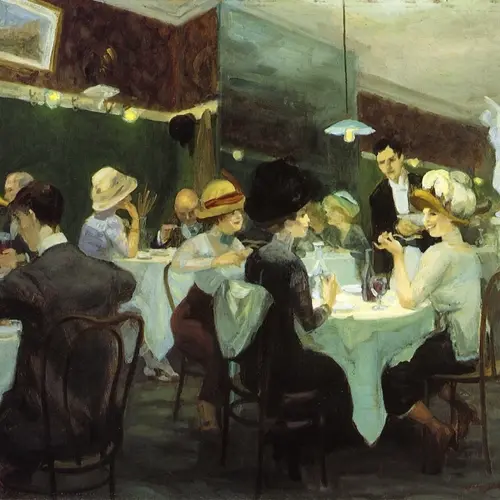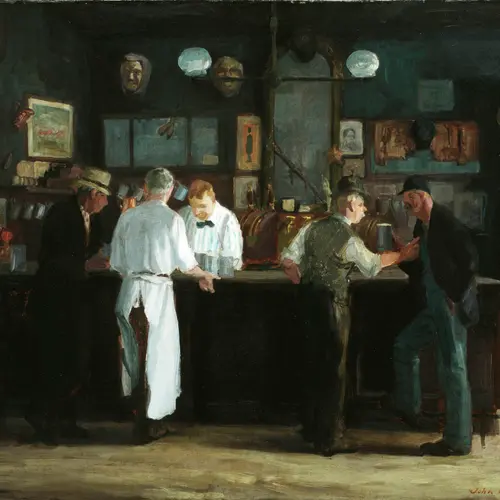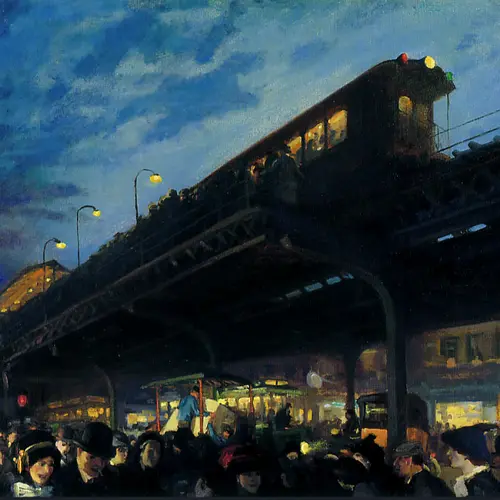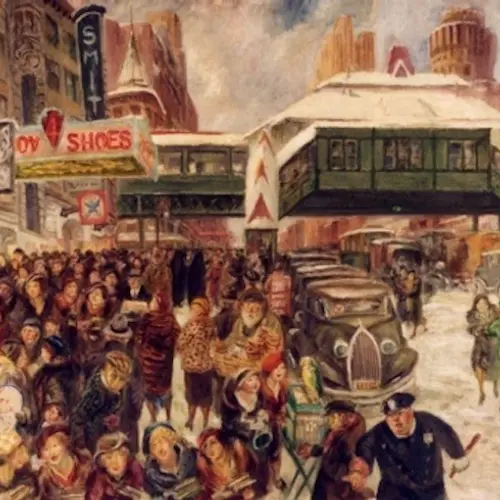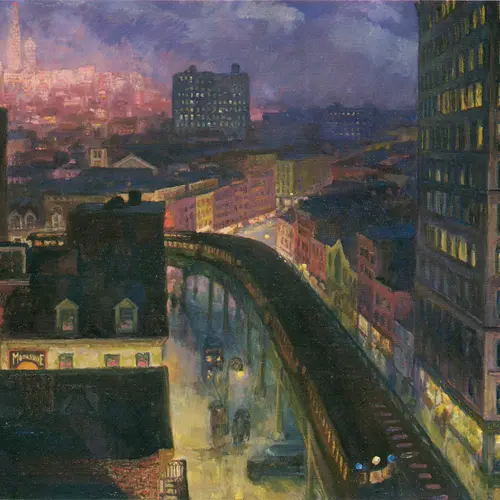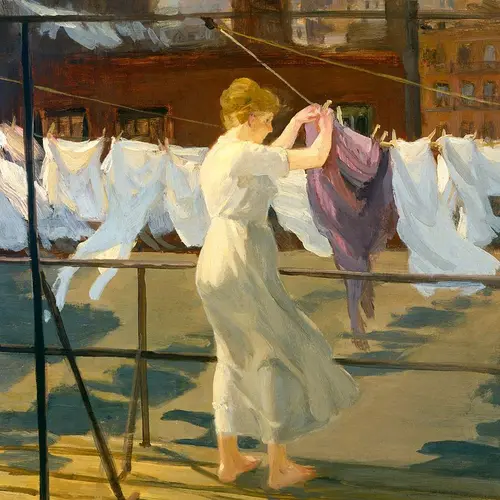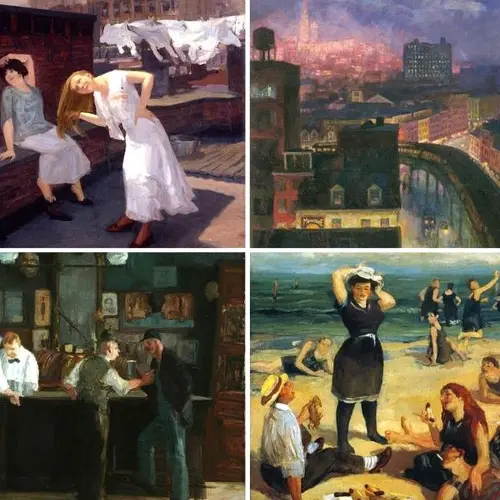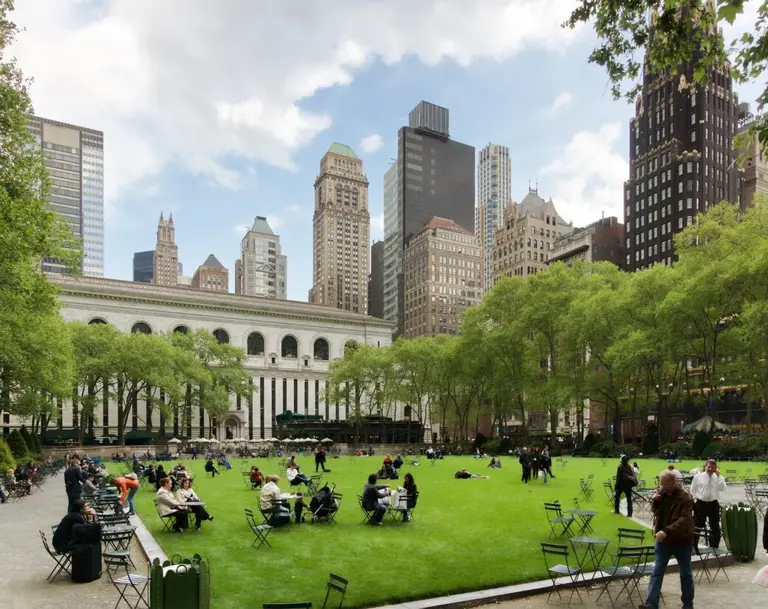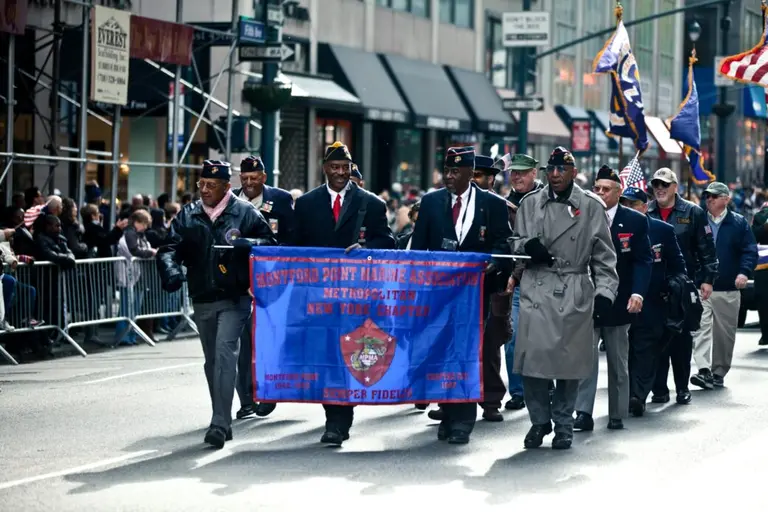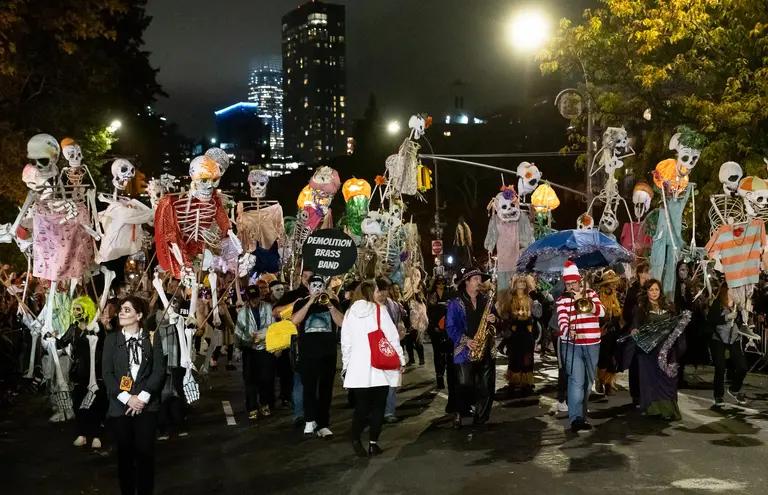Elevated rails, rooftops, and McSorley’s: How painter John Sloan captured 20th-century Manhattan
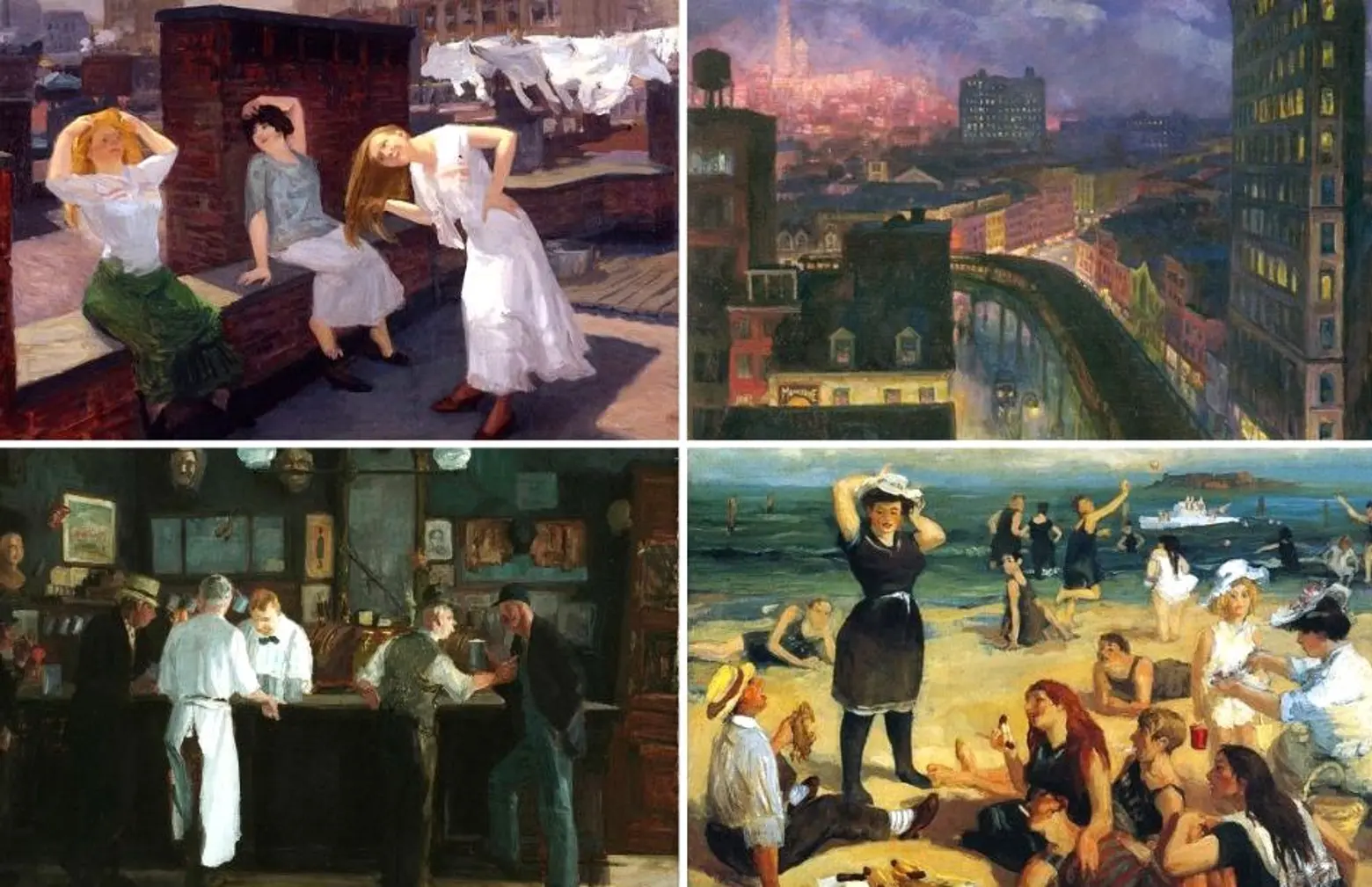
Many artists have been inspired by the scenes of life in New York City, particularly Lower Manhattan. But perhaps no artist captures the feeling of New York during the hot, heavy days of August like the painter John Sloan. Sloan was one of the leading figures of the “Ashcan School” of artists of the early 20th century, a loosely-defined movement which took its name from a derisive reference to the supposed lowbrow quality and themes of their work, and the smudgy, impressionistic brushstrokes they utilized. His workaday subjects and hazy images of city life capture the heaviness of the air of New York during its dog days. Here’s a look at some of those paintings of life in our city 100 years ago.

The Varitype Building at 2 Cornelia Street via Wikimedia
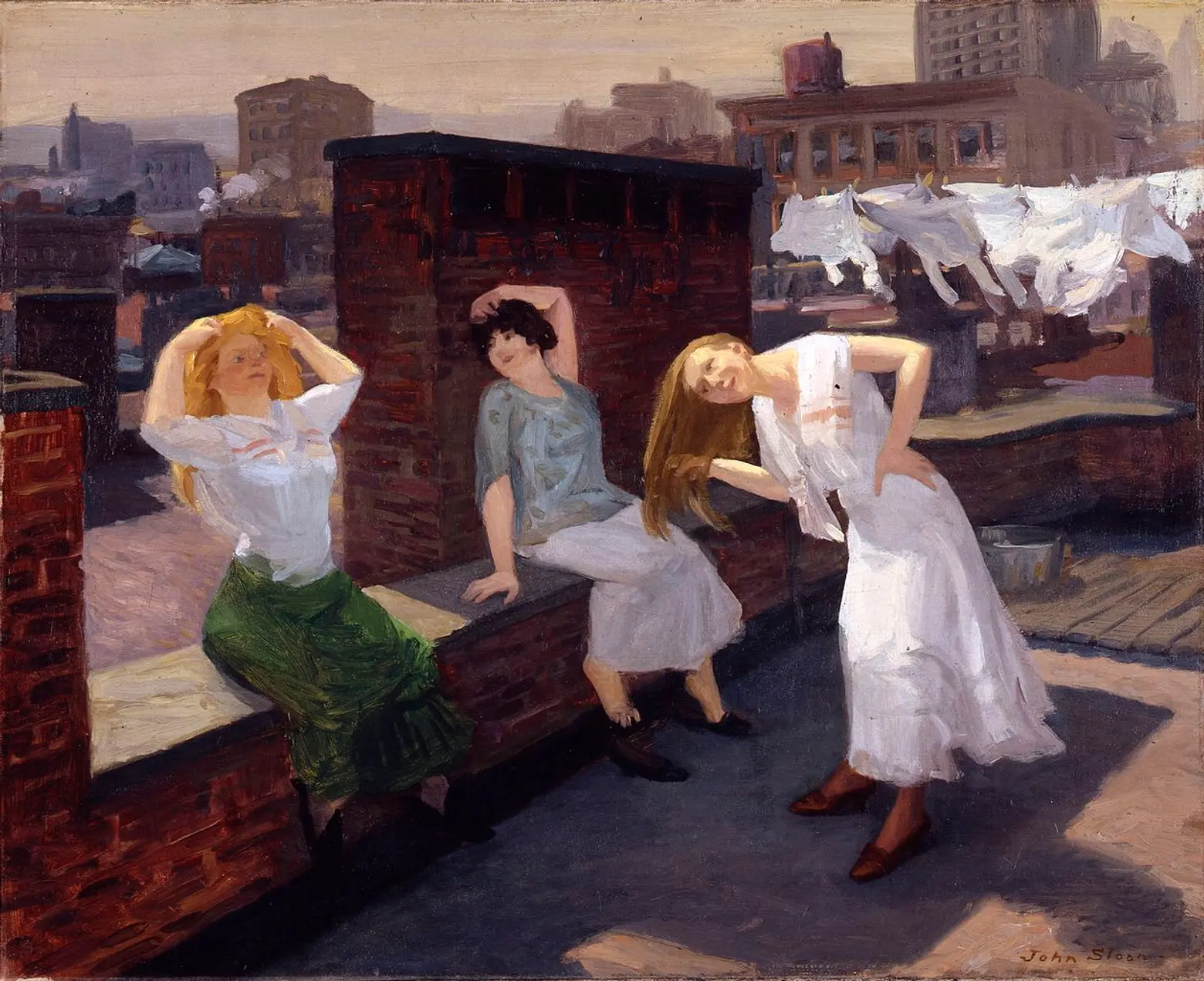
Photographic reproduction courtesy of the Addison Gallery of America Art on Wikimedia
Sunday Women, Drying Their Hair (1912)
Sloan maintained a painting studio in the Varitype Building, a tall, Flatiron-shaped loft building at the corner of Sixth Avenue, Cornelia Street, and West 4th Street in Greenwich Village, (built in 1907 and converted to residences in 1982). The perch afforded him almost unimpeded views of the low-rise rooftops around him, which in those days before air conditioning were full of working-class New Yorkers escaping the heat.
Sloan described the inspiration for this painting as “another of the human comedies which were regularly staged for my enjoyment by humble roof-top players of Cornelia Street.” The three women lounge around carelessly and at ease, enjoying their own little bit of tar beach as countless New Yorkers have before and since. Drying laundry flaps in the background behind them.
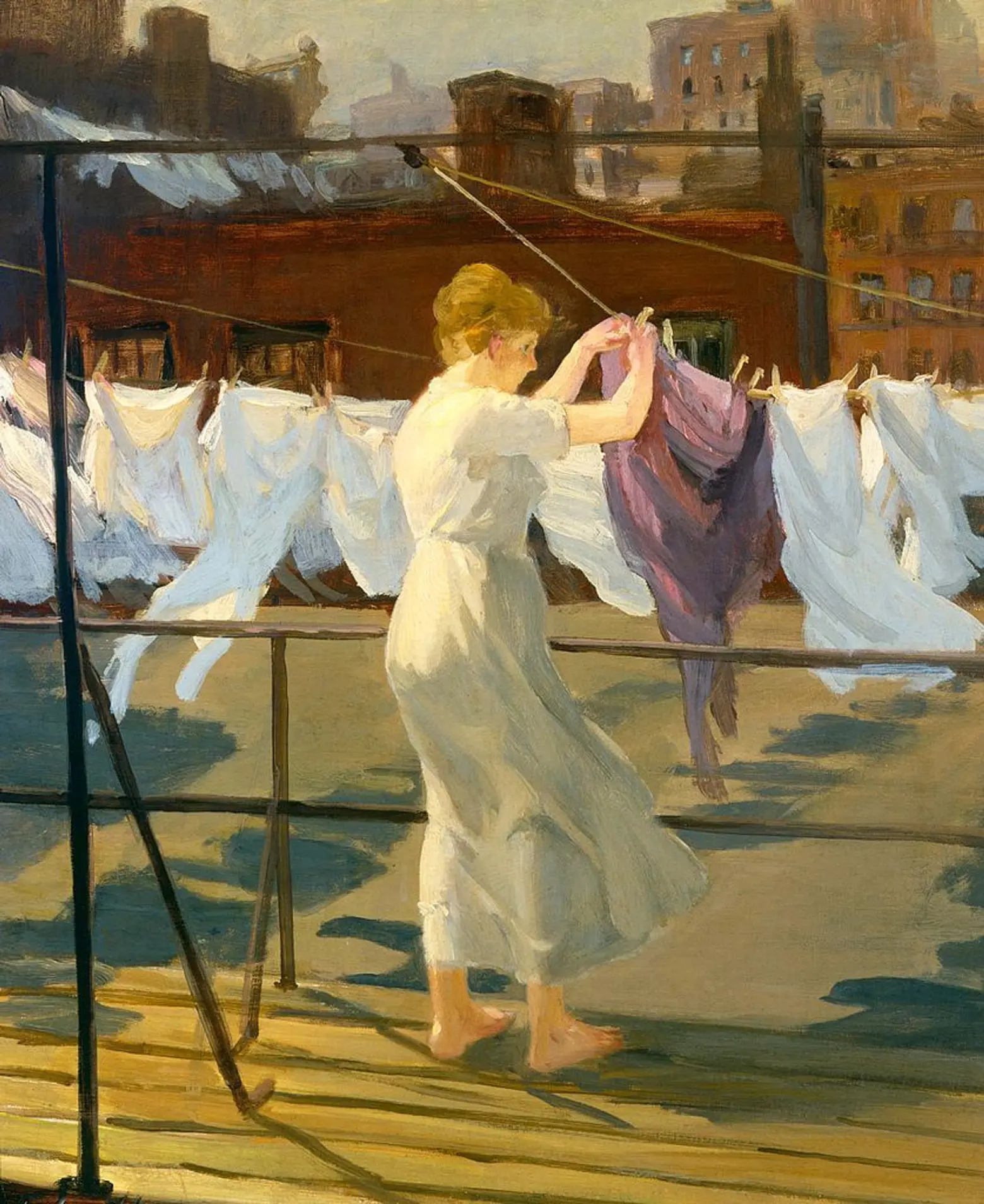
Photographic reproduction courtesy of the Maier Museum of Art at Randolph College on Wikimedia
Sun and Wind on the Roof (1915)
Rooftops were a virtual obsession of Sloan’s and the subject of many of his paintings. They were at once the most public of places, open to the sky and city around them, and yet often intimate and personal, as their occupants were frequently alone in their perch, like Sloan as he would observe and paint them.
The details on the buildings in this painting, and the activity of the women hanging clothes to dry, show this to be a tenement district, here again, likely within view of Sloan’s studio in the Varitype Building.
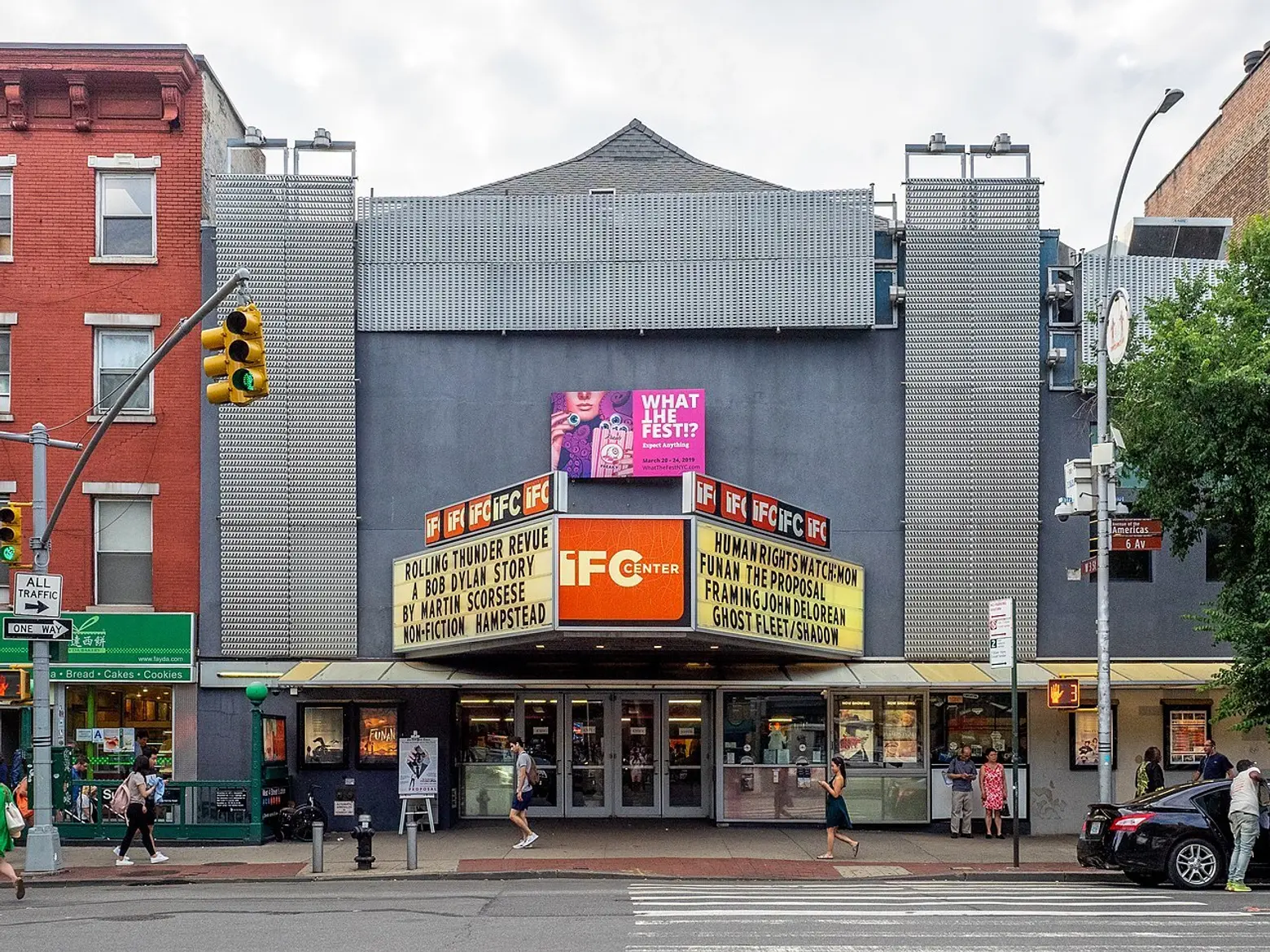
What is now the IFC Center once housed the Dutch Reform Church; photo via Wikimedia
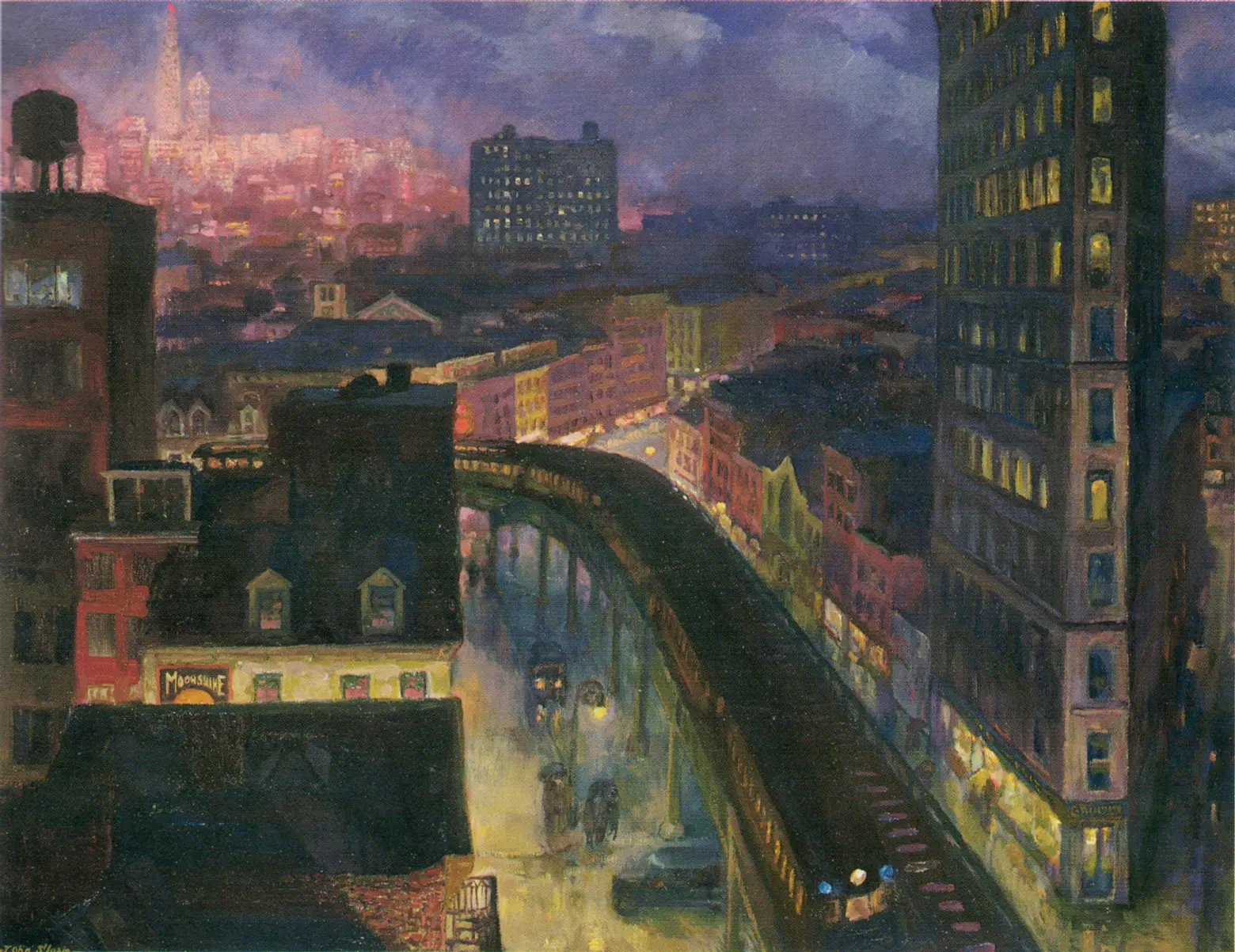
Photographic reproduction courtesy of the National Gallery of Art on Wikimedia
The City from Greenwich Village (1922)
Another obsession of Sloan’s was the elevated subway, that most democratic and accessible forms of public transport in early 20th century New York. This painting is actually a self-portrait of sorts, as it shows the Varitype Building on 6th Avenue and 4th Street where his studio was located on the right, with the lights and skyscrapers of Wall Street behind it to the left.
You might also notice the arched building that looks like a church a few doors south of the Varitype Building. That was in fact a Dutch Reform Church, constructed in 1807, which in the early 1930s was converted into the Waverly Theater, where the Rocky Horror Picture Midnight Show was first launched. In the early 2000s, the theater was transformed again into today’s IFC Center.
Another big difference noticeable from this painting and today is the elevated train running down the middle of Sixth Avenue, the old Sixth Avenue El. Perhaps more surprisingly, though, the train makes a sharp turn onto narrow West 3rd Street, one of the sharpest on any New York elevated at the time. Just out of view, the train took another sharp right to continue down today’s LaGuardia Place, then simply known as West Broadway (as its lower section below Houston Street is still known today).
Why did the train snake through those narrow streets rather than just continue down 6th Avenue? As you may also see in the painting, in 1922 Sixth Avenue ended (or began, actually) just below West 3rd Street. It was not until the late 1920s that Sixth Avenue was cut through to extend all the way south to below Canal Street, as it does now, where it connects with Church Street and continues south into the Financial District.
This was done to create greater ease of transport around Manhattan for the growing number of automobiles. But it was also done to allow the construction of the IND (Independent) Subway Line under Sixth Avenue (today’s A, C, and E), which was owned and operated by the City of New York, unlike the elevated trains, which were privately owned, with the intention of putting them out of business. It was successful, and the Sixth Avenue El was dismantled a decade later in the 1930s.
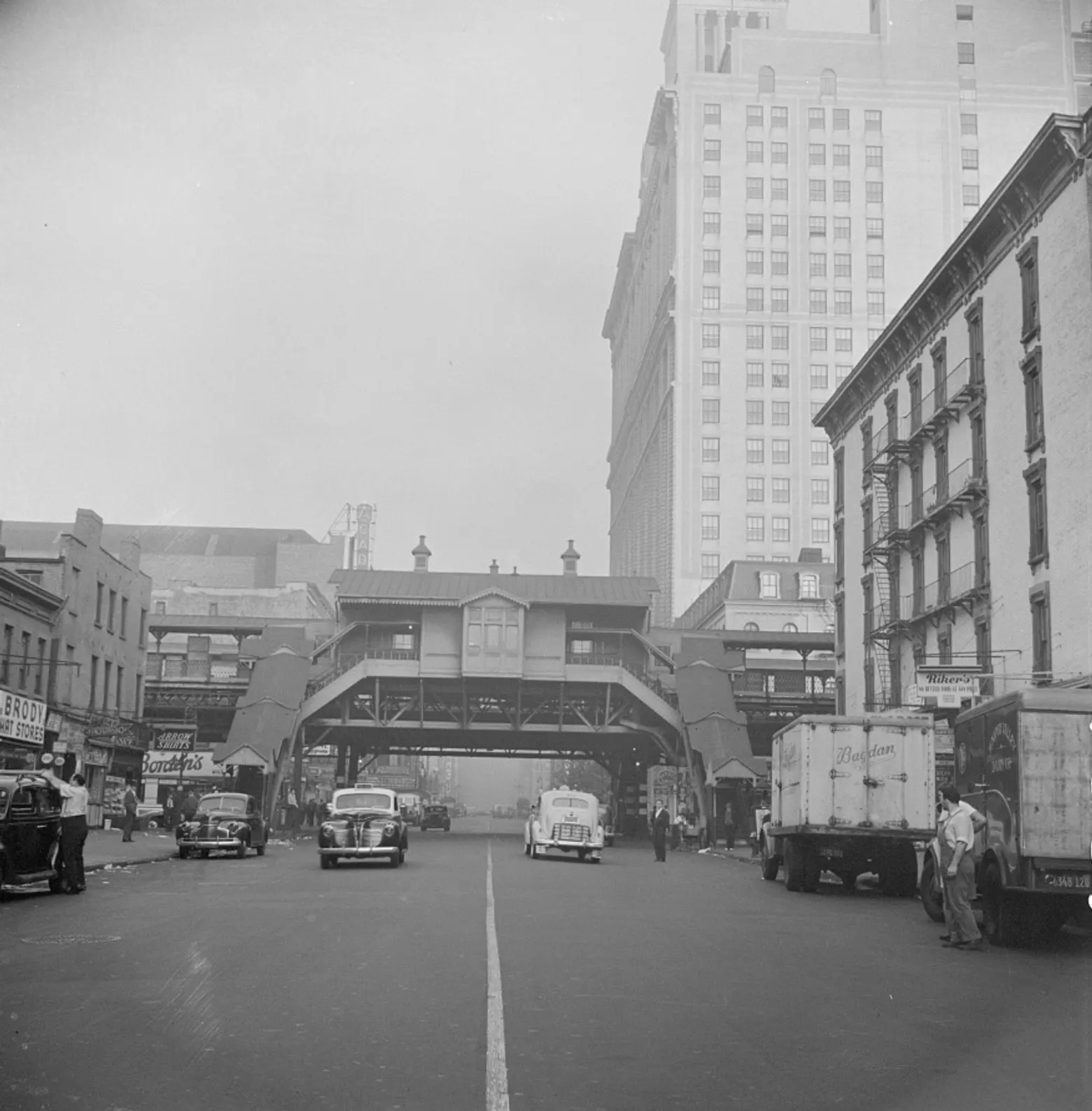
Looking west at the Third Ave elevated train on 14th Street, via Wikimedia

Via Wikimedia
Sixth Avenue at Fourteenth Street (1933)
Sloan’s focus on the elevated train continued with this portrait of the same Sixth Avenue line at its next stop to the north, and a decade later. Painted just a few years before the El came down for good, it shows the jostling crowds of average New Yorkers on streets jammed with many more cars than in the previous portrait.
Fourteenth Street was then the heart of New York’s bargain shopping district. Many of the buildings in the painting still stand today, including the original Macy’s Department Store at 56 West 14th Street, visible just behind the marquee that says “shoes,” as well as the building on the southwest corner of 14th Street and Sixth Avenue, just to the right of the “Smith” sign, which sadly had its distinctive “witch’s hat” cone, shown here, removed just a few years ago.
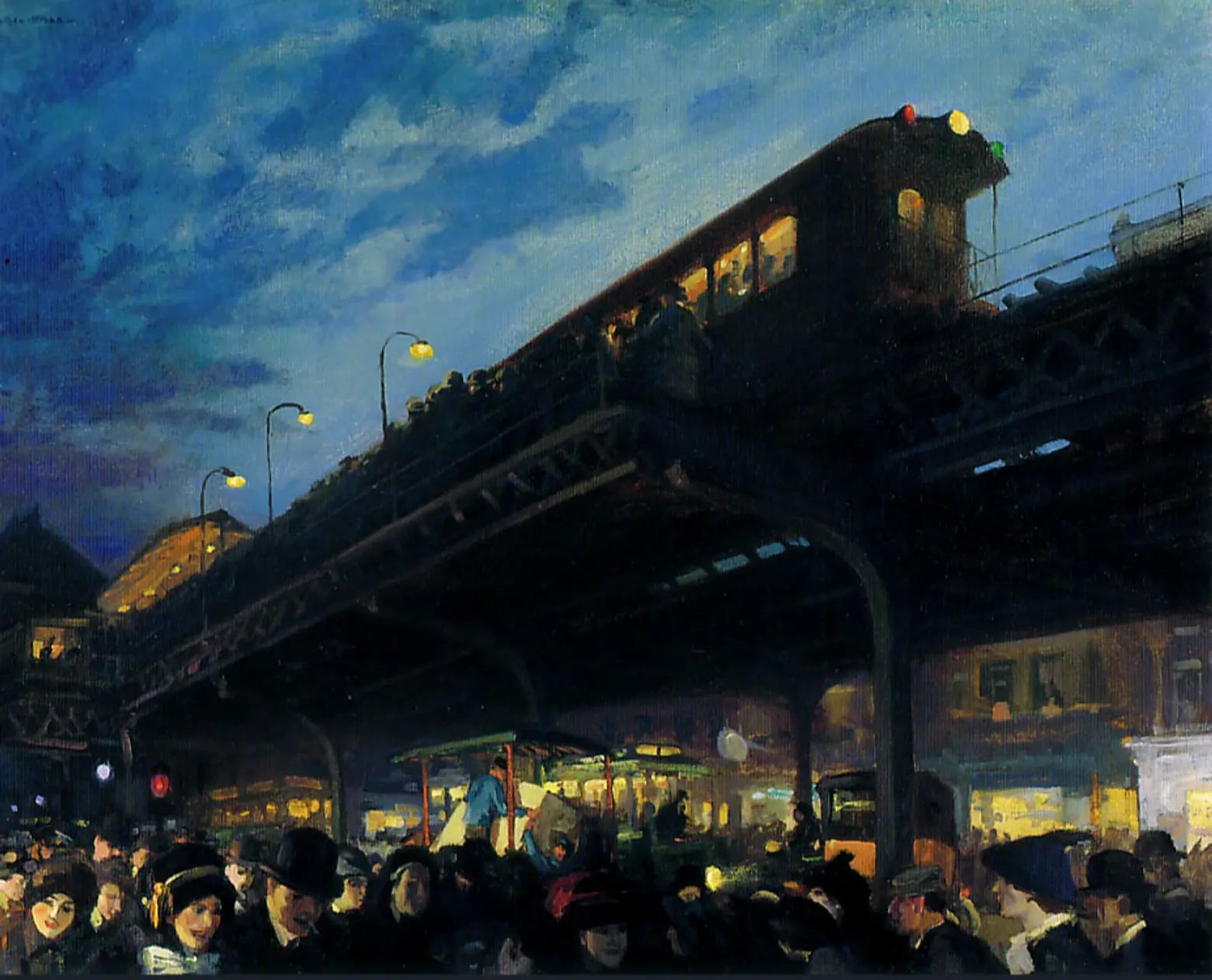
Photographic reproduction courtesy of the Phillips Collection on WikiArt
Six O’Clock, Winter (1912)
Of course, Sloan didn’t only paint summer scenes, nor was the Sixth Avenue El the only elevated train he portrayed. This painting showed the Third Avenue El, which was the last surviving elevated train line in Manhattan, not torn down until 1955.
Here it is dusk in winter, and the throngs of average New Yorkers are coming and going from both the trains and the streetcars that ran underneath. While the exact location is unclear, the relatively low-scale buildings around this busy intersection and Sloan’s focus on Lower Manhattan means it is likely somewhere in between Midtown and the Financial District.
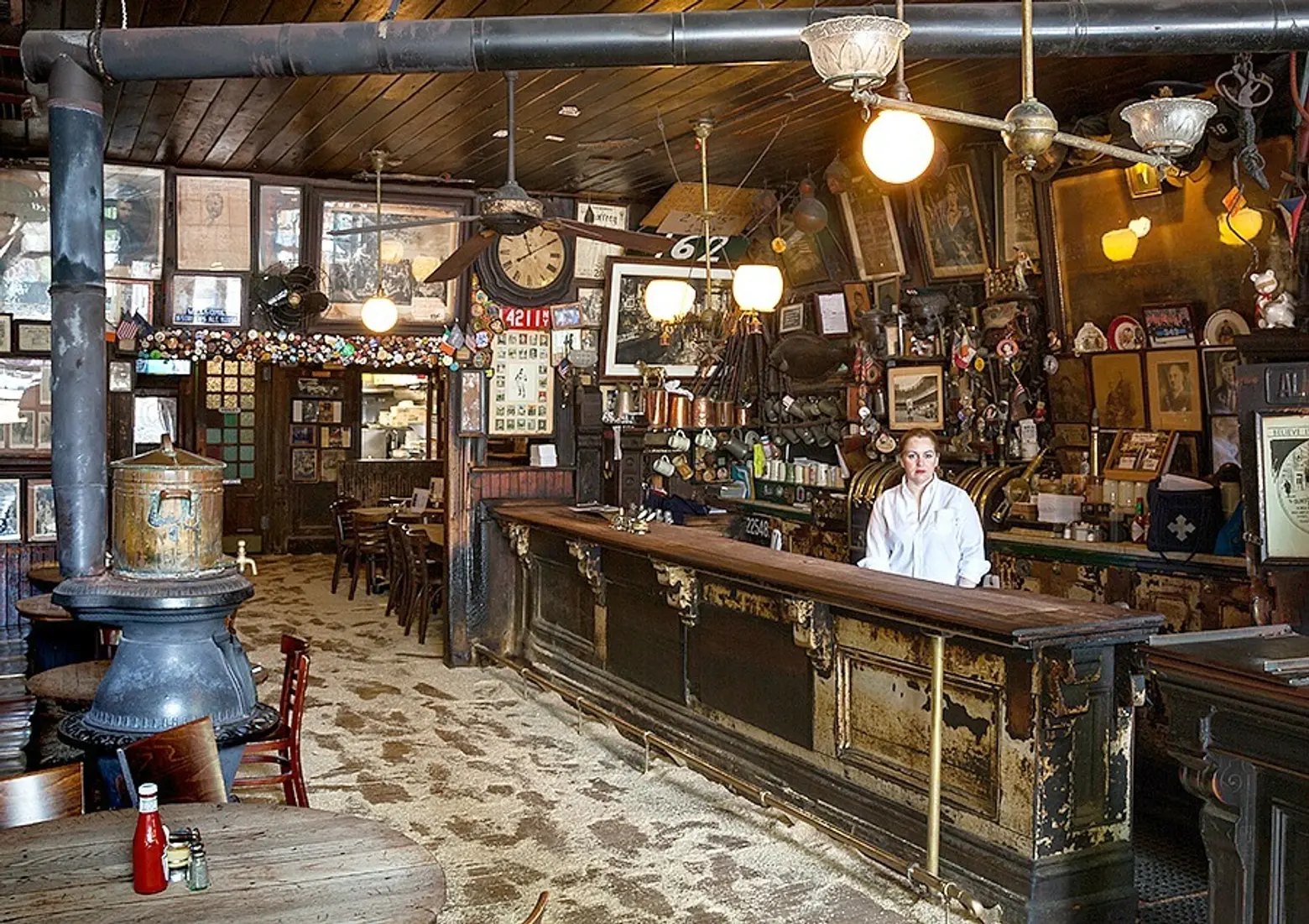
Image © James and Karla Murray
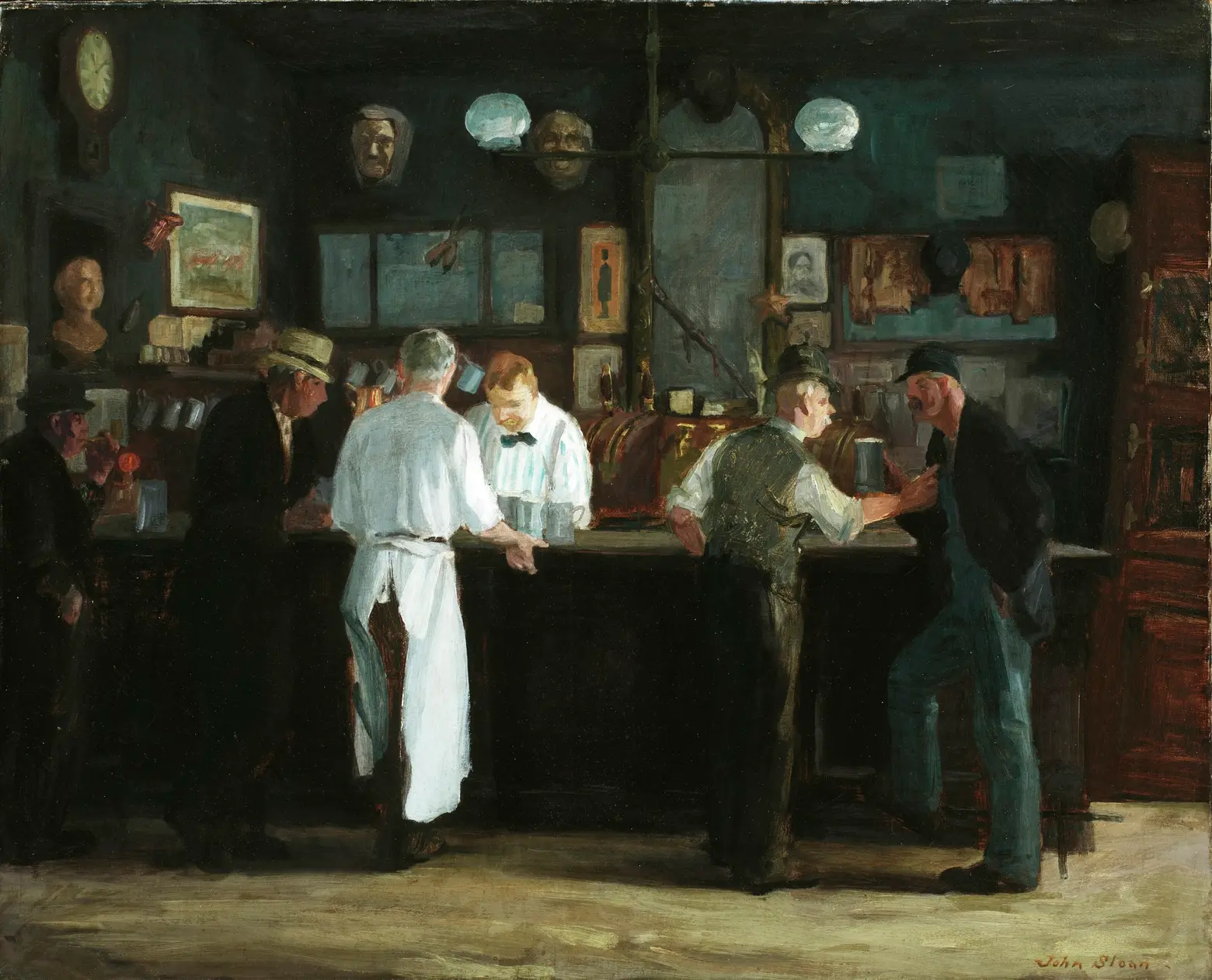
Photographic reproduction courtesy of the Detroit Institute of Arts on Wikimedia
McSorley’s Bar (1912)
Just a few feet from the Third Avenue Elevated was another of Sloan’s favorite subjects, McSorley’s Old Ale House on East 7th Street, even then one of New York’s most venerable old taverns, founded sometime in the late 1850s or 1860 by an Irish immigrant.
The painting appears to show the sawdust floors McSorley’s is known for, as well as the ‘men only’ policy the tavern maintained until 1970 when legislation forced them to open the doors to women.
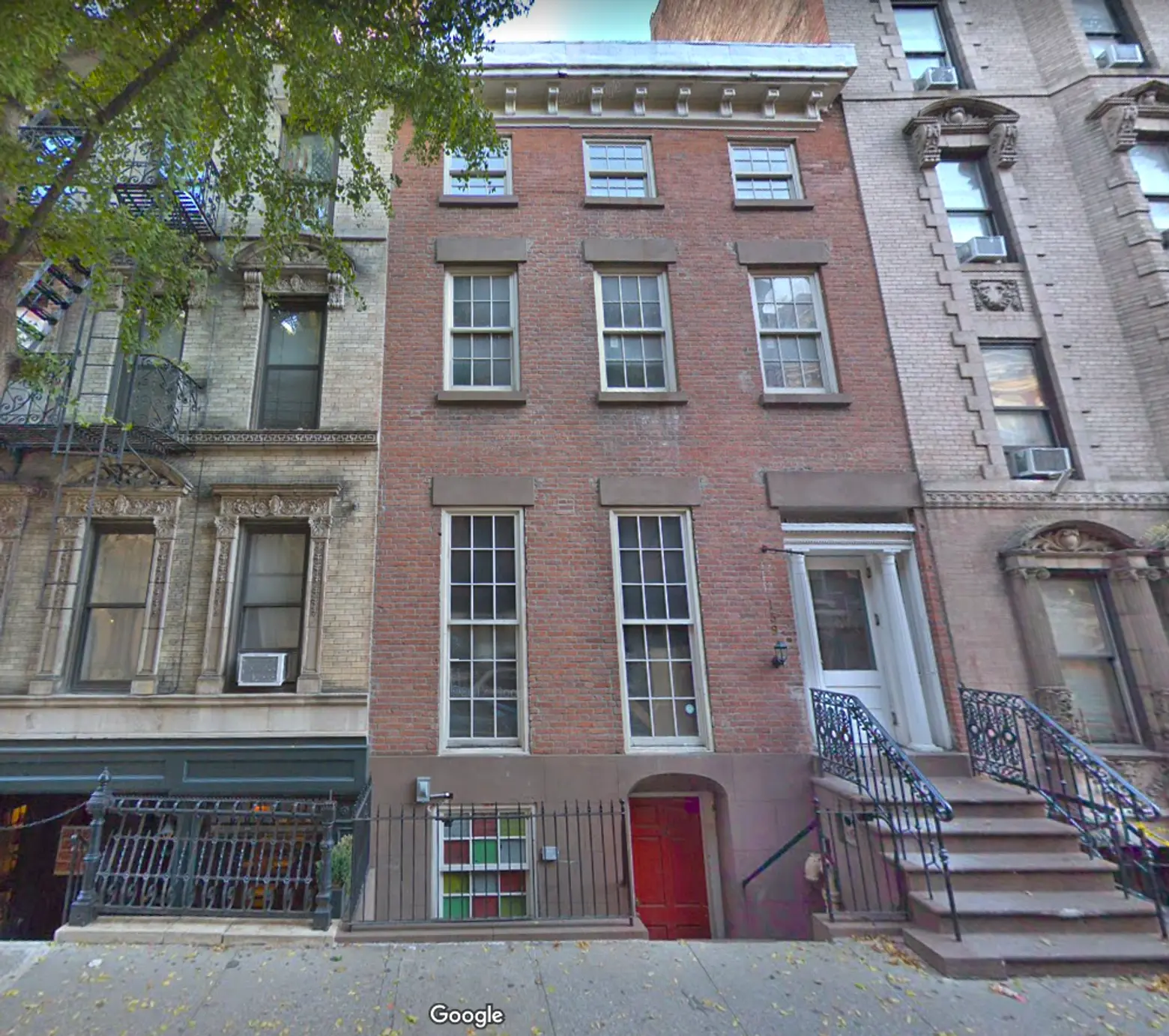
Courtesy of Google Street View, Nov 2017
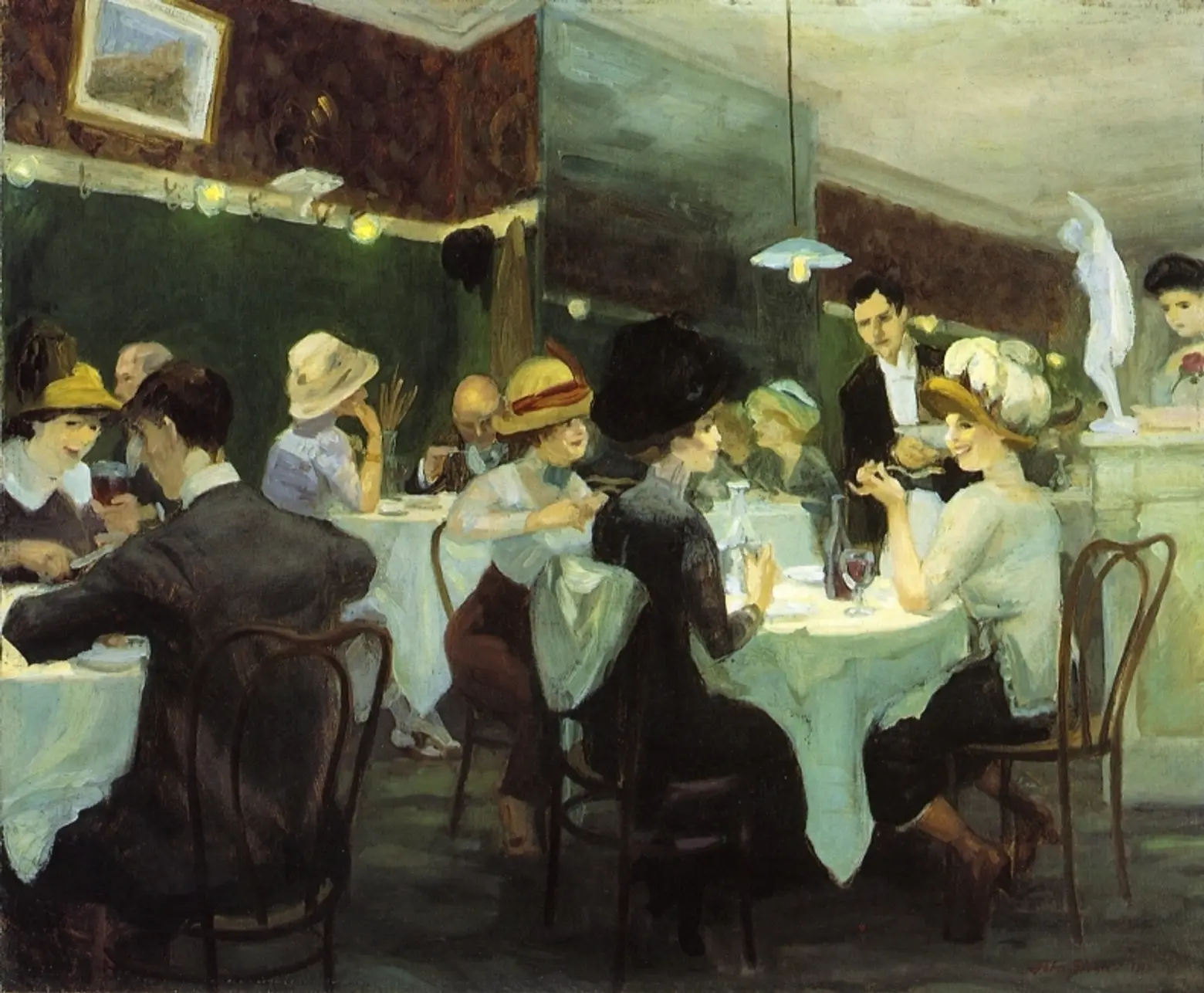
Photographic reproduction courtesy of the Art Institute of Chicago on Wikimedia
Renganeschi’s Saturday Night (1912)
McSorley’s wasn’t the only downtown haunt frequented by Sloan. Giovanni Renganeschi’s Italian Restaurant at 139 West 10th Street in Greenwich Village was a favorite not just of local immigrants and working people, but increasingly of the artists and writers who were drawn to their neighborhoods.
Many of the signifiers in the painting would be lost on a 21st-century viewer. The three women eating together reflects the relatively new freedom women in cities had to socialize without male escorts. Their legs wrapped around their chairs and pinkies flared in the air flouted the polite conventions of the day, indicating these were working-class women, bohemians, or both.
The space where Renganeshi’s was located enjoyed a storied history. By the 1950s, it had become a bar popular with a literary crowd. Playwright Edward Albee was drinking here one night and saw the question “Who’s Afraid of Virginia Wolf?” scrawled on the mirror; he later said that it inspired the name of his play, which he interpreted to mean “who’s afraid of living without false illusions?” It later became a gay bar known as the Ninth Circle. The building still stands.
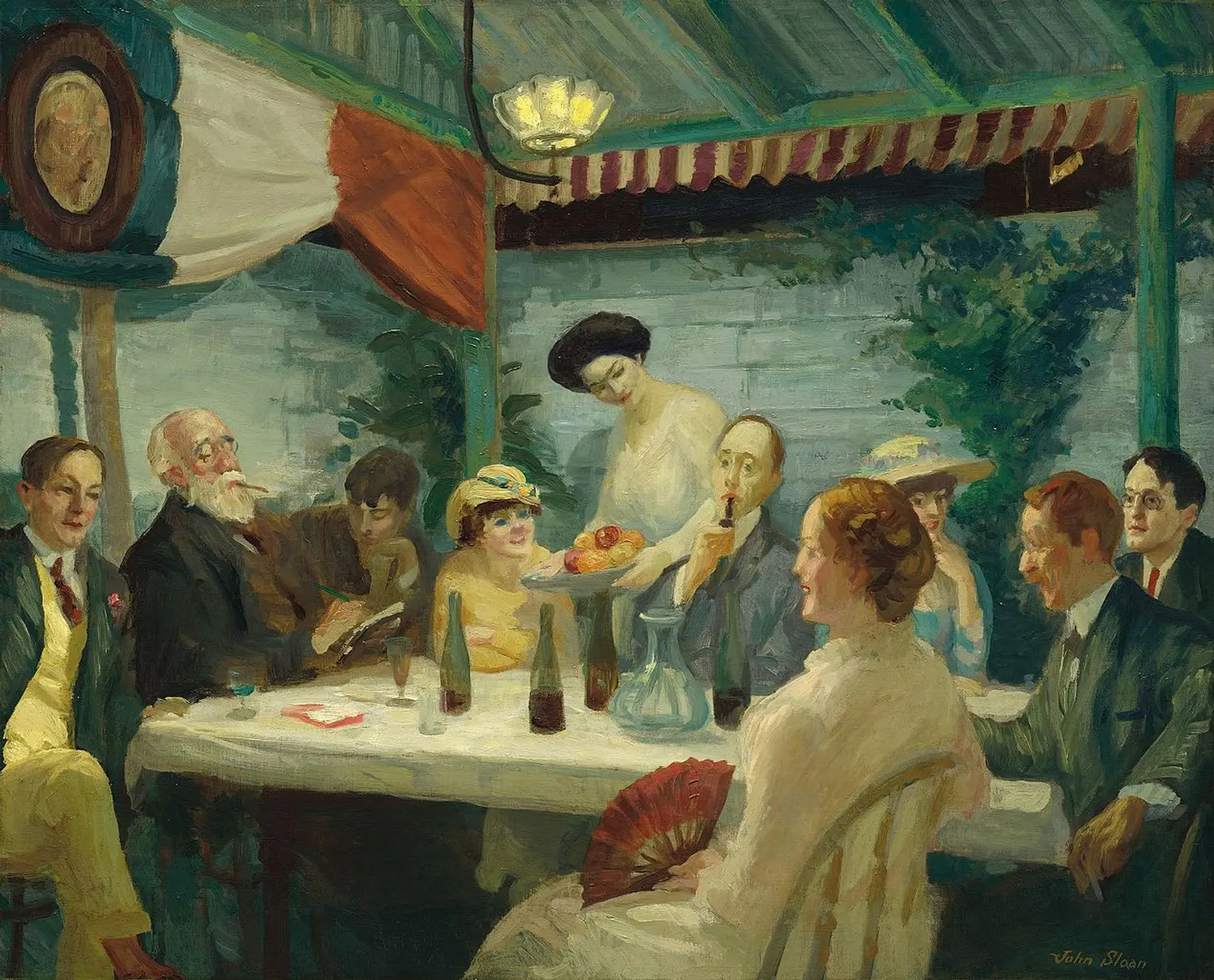
Photographic reproduction courtesy of the National Gallery of Art on Wikimedia
Yeats at Petitpas’ (1910-1914)
A big fan of Sloan’s portrait of Renganeschi’s was fellow painter John Butler Yeats, who praised it in The Seven Arts. Sloan returned the favor by honoring him with this work, which took him four years to complete, of his mentor surrounded by other notable artistic figures of the time. Petitpas’ was a boarding house and restaurant run by three French sisters at 317 West 29th Street (the building no longer stands), then still a largely French neighborhood in New York’s gritty Tenderloin, another favorite spot for Sloan. In the early 20th century Petitpa’s was popular with writers and artists.
Yeats, an Irish immigrant and the father of poet William Butler Yeats, lived at Petitpas’ from 1909 until his death in 1922. Each night, he would preside over a table in the courtyard of the restaurant, usually surrounded by his fellow artists. In this portrait, he is near the left with the gray beard, drawing. To his left is literary critic Van Wyck Brooks; on his right is painter Alan Seeger; proprietor Celestine Petitpas is standing, and Sloan himself is on the right with glasses. The painting is a salute to Yeats and his influence over a broad range of artists, writers, and thinkers. Note the French flag.
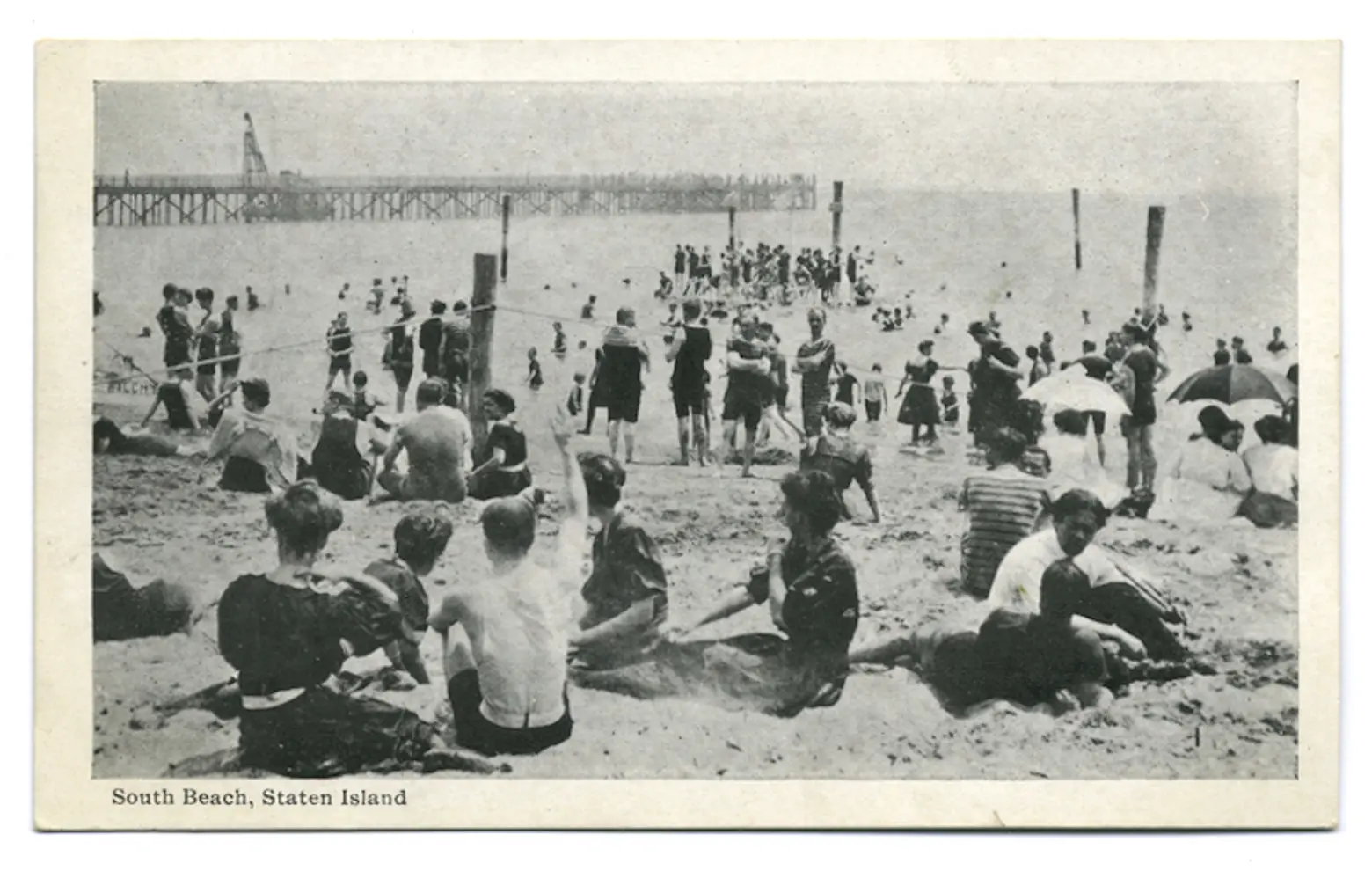
Irma and Paul Milstein Division of United States History, Local History and Genealogy, The New York Public Library. “South Beach, Staten Island (people on beach and on float, pier in background).”

Photographic reproduction courtesy of the Walker Art Center on Wikimedia
South Beach Bathers (1907-1908)
Sloan also liked to get out of the steamy, crowded streets of Lower Manhattan during the summer. One destination was South Beach on Staten Island, an amusement park and waterfront bathing area popular with working-class New Yorkers.
In this portrait, two themes common in Sloan’s paintings are on full display. The working-class character of the subjects is illustrated by their casual poses and unselfconscious demeanor as they lie next to and across one another, smoking and eating hot dogs. And women are demonstrating newfound freedom, flirting, leading the conversation, and serving as the center of attention and driver of the interactions, eschewing the role of a passive object or deferential companion.
RELATED:
- Uncovering the stories behind downtown’s overlooked synagogues
- The social and cultural Puerto Rican history of the East Village
- Before the duel: Aaron Burr and Alexander Hamilton’s NYC haunts
+++
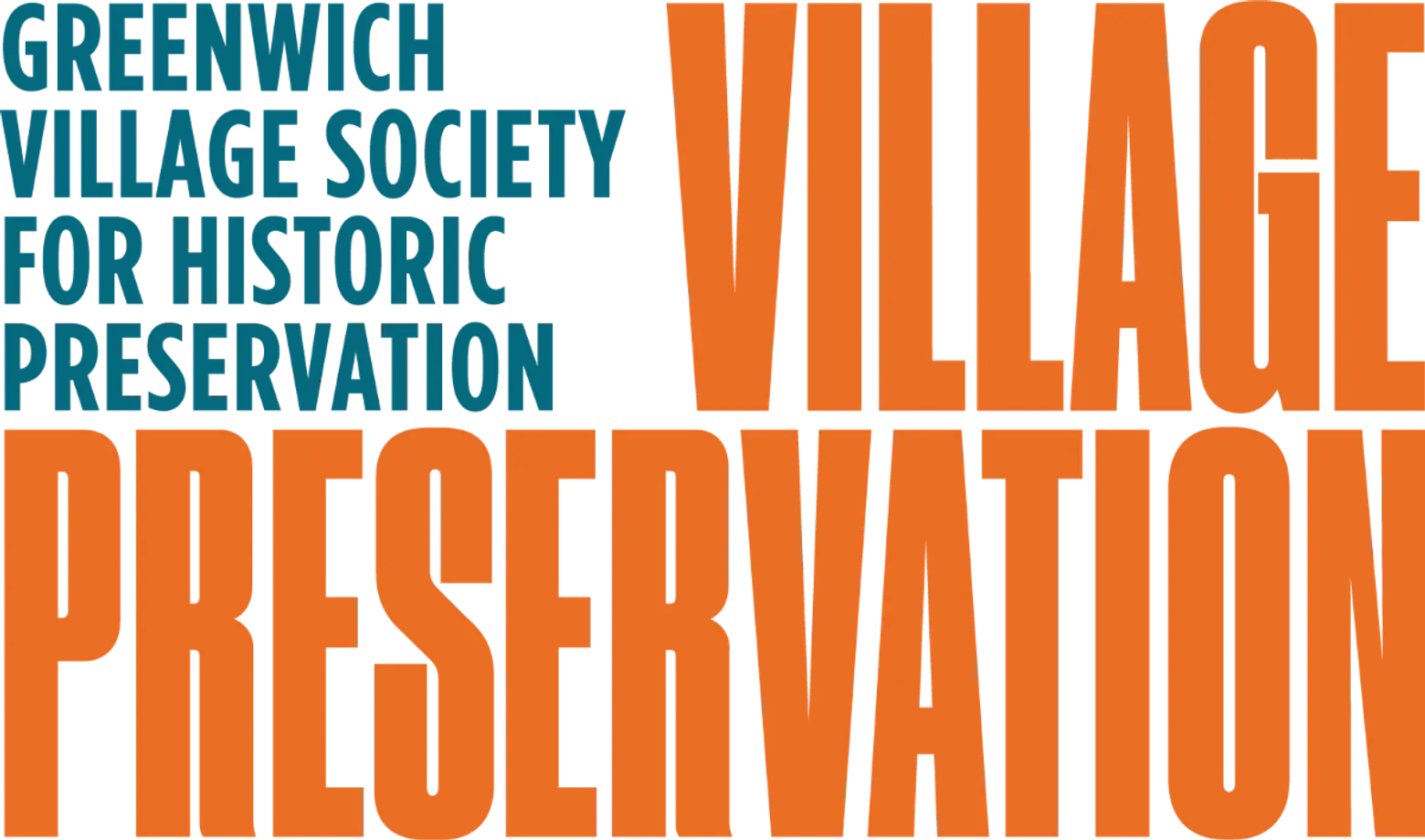
This post comes from Village Preservation. Since 1980, Village Preservation has been the community’s leading advocate for preserving the cultural and architectural heritage of Greenwich Village, the East Village, and Noho, working to prevent inappropriate development, expand landmark protection, and create programming for adults and children that promotes these neighborhoods’ unique historic features. Read more history pieces on their blog Off the Grid
